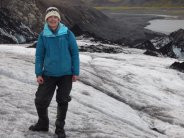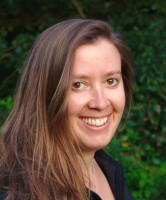Climate & Environment
Natural Catastrophes
Climate Change
Volcanic Eruption
Ice-sheet Melting
Greenhouse Gases Emissions
Post-Doctoral Fellowships
United Kingdom
2013.09.30
Understanding Katla, Iceland’s notorious and restless volcano: Lessons from 1918
The eruption of the Icelandic volcano Eyjafjallajökull in 2010 caused massive disruption to world aviation—but its neighbor, Katla, is even bigger. This powerful volcano typically erupts twice a century, spewing out large amounts of fragmented rock and lava, including ash, and causing giant floods as the overlying ice melts. It has now been 97 years since Katla’s last confirmed eruption, a huge one in 1918 that blanketed half of Iceland in ash and produced one of the largest floods in history. The water’s peak flow exceeded that of the Amazon River and Iceland’s coastline was extended several kilometers by the sediment it carried from Katla. This eruption produced five times as much material as Eyjafjallajökull did in 2010. One can only imagine the effect a repeat of the 1918 event would have in today’s world.
For these reasons, Dr. Jacqueline Owen is on the case, investigating the 1918 eruption in order to understand what makes Katla tick. What determines the dynamics of its eruptions? Why are they so explosive? Her clues lie in the ash. Grain size, geochemistry, gas content, bubble and crystal populations: By analyzing such physical and chemical characteristics of the ash, she is able to deduce a great deal about the conditions that formed it and, thus, what took place when the volcano last blew. By determining, for instance, how deep the magma was before it was erupted and how fast it reached the surface, scientists will be better able to interpret earthquake data and assess if an eruption is coming and when. Another key question is what was controlling the explosive nature of the eruption: was it the gas within the magma, or interaction with meltwater that was turned suddenly to steam? Answering this might help us predict when the most explosive phases of the eruption might be, and throw light on how Katla was able to melt so much ice so quickly and produce such a powerful flood. Additionally, knowing how much gas Katla released into the atmosphere last time will help predict the effects its emissions could have on today’s agriculture and climate. Forewarned is forearmed and Dr. Owen aims to be well equipped the next time the volcano wakes.
For these reasons, Dr. Jacqueline Owen is on the case, investigating the 1918 eruption in order to understand what makes Katla tick. What determines the dynamics of its eruptions? Why are they so explosive? Her clues lie in the ash. Grain size, geochemistry, gas content, bubble and crystal populations: By analyzing such physical and chemical characteristics of the ash, she is able to deduce a great deal about the conditions that formed it and, thus, what took place when the volcano last blew. By determining, for instance, how deep the magma was before it was erupted and how fast it reached the surface, scientists will be better able to interpret earthquake data and assess if an eruption is coming and when. Another key question is what was controlling the explosive nature of the eruption: was it the gas within the magma, or interaction with meltwater that was turned suddenly to steam? Answering this might help us predict when the most explosive phases of the eruption might be, and throw light on how Katla was able to melt so much ice so quickly and produce such a powerful flood. Additionally, knowing how much gas Katla released into the atmosphere last time will help predict the effects its emissions could have on today’s agriculture and climate. Forewarned is forearmed and Dr. Owen aims to be well equipped the next time the volcano wakes.
Forewarned is Forearmed: Investigating the 1918 Katla Eruption
To add or modify information on this page, please contact us at the following address: community.research@axa.com

Jacqueline
OWEN
Institution
Lancaster University
Country
United Kingdom
Nationality
British
Related articles
Climate & Environment
Climate Change
Finance, Investment & Risk Management
Societal Challenges
Climate Adaptation & Resilience
Insurance & Risk Management
Environmental Justice
Civil Society & Governance
AXA Project
Italy
AXA Research Lab on Climate Change, Risk and Justice
In response to three research questions: How can the private and financial sectors contribute to a just transition to a... Read more

Gianfranco
PELLEGRINO


